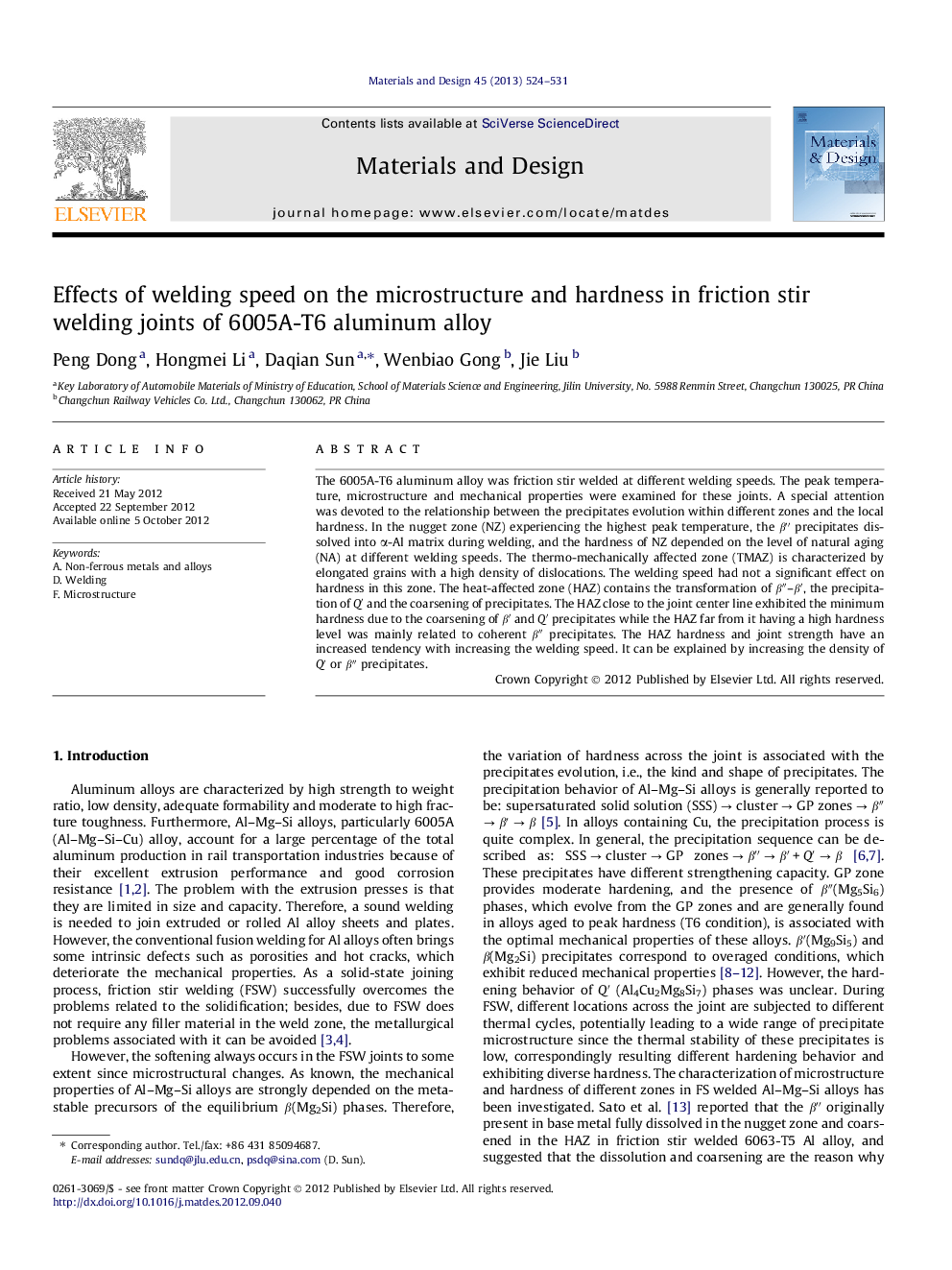| Article ID | Journal | Published Year | Pages | File Type |
|---|---|---|---|---|
| 830281 | Materials & Design (1980-2015) | 2013 | 8 Pages |
The 6005A-T6 aluminum alloy was friction stir welded at different welding speeds. The peak temperature, microstructure and mechanical properties were examined for these joints. A special attention was devoted to the relationship between the precipitates evolution within different zones and the local hardness. In the nugget zone (NZ) experiencing the highest peak temperature, the β″ precipitates dissolved into α-Al matrix during welding, and the hardness of NZ depended on the level of natural aging (NA) at different welding speeds. The thermo-mechanically affected zone (TMAZ) is characterized by elongated grains with a high density of dislocations. The welding speed had not a significant effect on hardness in this zone. The heat-affected zone (HAZ) contains the transformation of β″–β′, the precipitation of Q′ and the coarsening of precipitates. The HAZ close to the joint center line exhibited the minimum hardness due to the coarsening of β′ and Q′ precipitates while the HAZ far from it having a high hardness level was mainly related to coherent β″ precipitates. The HAZ hardness and joint strength have an increased tendency with increasing the welding speed. It can be explained by increasing the density of Q′ or β″ precipitates.
► The hardness of NZ depended on the level of NA at different welding speeds. ► Different welding speeds did not result in obvious difference in hardness of TMAZ. ► The remnant β″ precipitates determine the hardness of HAZ2. ► The hardness of HAZ1 was controlled by Q′ precipitates rather than β′. ► The width of HAZ expanded as welding speed decreased.
